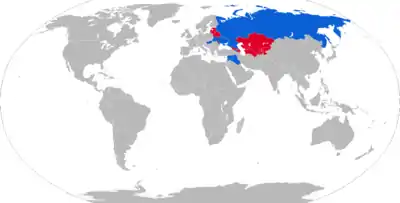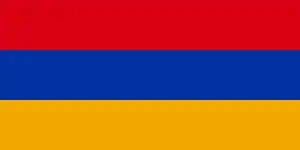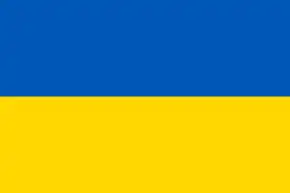| 2B9 Vasilek | |
|---|---|
 82 mm 2B9 Vasilek Gun-mortar | |
| Type | Gun-mortar |
| Place of origin | Soviet Union |
| Service history | |
| In service | 1970–present |
| Wars | Soviet–Afghan War Syrian Civil War War in Donbas Russo-Ukrainian War |
| Production history | |
| Manufacturer | Bolshevik Plant, Norinco, Diósgyőri Gépgyár |
| Specifications | |
| Mass | 632 kg (1,393 lb) |
| Shell | 3.23 kg (7 lb 2 oz) bomb |
| Caliber | 82 mm (3.2 in) |
| Breech | muzzle or breech loaded |
| Elevation | −1° to 85° |
| Traverse | 60° |
| Rate of fire | 100–120 rpm |
| Muzzle velocity | 270 m/s (890 ft/s) |
| Maximum firing range | 4,270 meters |
| Sights | PAM-1 2.5× or 3× |
The 2B9 Vasilek (2Б9 "Василёк" - Cornflower) is an automatic 82 mm gun-mortar developed in the Soviet Union in 1967 and fielded with the Soviet Army in 1970. It was based on the F-82 automatic mortar. Unlike conventional mortars, the 2B9 can fire in single and automatic mode using four-round clips. Rounds can be loaded from either the muzzle or the breech. Because of its wheeled carriage, the 2B9 resembles a light artillery piece more than a conventional mortar.
The 2B9 was used in Afghanistan[1] by Soviet units and is still found in Russian airmobile infantry units. In the fighting in Afghanistan, Soviet units found the 2B9 to be a versatile and useful weapon.[2] The 2B9 can fire high-explosive, armor-piercing and smoke shells, as well as flares. The armor-piercing projectile, which weighs 3.1 kg, has a 75 g warhead that can penetrate 100mm of armor.[3] Upon blast, the high-explosive shell produces 400 to 600 fragments.
The 2B9 can be towed but is usually carried on a modified GAZ-66.[4] By 1988, the 2B9 was also deployed as a self-propelled weapon by mounting the gun-mortar in the rear of an MT-LB armored personnel carrier.[5]
During the Syrian Civil War, the 2B9M Vasilek was used by the Syrian Armed Forces, Kurdish People's Protection Units, and the Islamist group Ansar al-Sham. The latter used a 2B9M automatic mortar near Mount Chalma, Kesab district.[6]
Variants
- 2B9 Vasilek – Basic model
- 2B9M Vasilek – Modernised version introduced in 1982, and adopted in 1983.[6]
- DE-82 - upgraded Hungarian version developed in 1987.[4]
- Type W99 – 2B9 Vasilek produced in the People's Republic of China by Norinco.[7]
Operators

Current operators
 Armenia[8]
Armenia[8] Hungary[4]
Hungary[4] Iraq – As for Saddam's era, often used mounted on MT-LB.
Iraq – As for Saddam's era, often used mounted on MT-LB. Russia[4]
Russia[4] Syria – Used by both government and rebel forces in the Syrian Civil War.[6]
Syria – Used by both government and rebel forces in the Syrian Civil War.[6] Ukraine – Used by both government and Donetsk People's Republic, Luhansk People's Republic forces in the war in Donbas[9][10]
Ukraine – Used by both government and Donetsk People's Republic, Luhansk People's Republic forces in the war in Donbas[9][10]
Former operators
 Soviet Union – Passed down to successor states.
Soviet Union – Passed down to successor states.
References
- ↑ Campbell, David (30 November 2017). Soviet Paratrooper vs Mujahideen Fighter: Afghanistan 1979–89. Combat 29. Osprey Publishing. p. 19. ISBN 9781472817648.
- ↑ "fmso.leavenworth.army.mil". Archived from the original on 5 November 2011. Retrieved 27 November 2010.
- ↑ Leland Ness (ed.), Jane's Infantry Weapons 2007–2008, pp. 556–557, Surrey: Jane's Information Group, 2007
- 1 2 3 4 Lovass, Ernő; Jenzen-Jones, N.R. (3 September 2018). "Soviet 2B9M Vasilek self-loading mortar". armamentresearch.com. Archived from the original on 7 October 2018. Retrieved 21 July 2019.
- ↑ "sill-www.army.mil" (PDF). Archived (PDF) from the original on 17 June 2011. Retrieved 26 November 2010.
- 1 2 3 Jenzen-Jones, N.R.; Lyamin, Yuri (18 June 2014). "2B9M Vasilek automatic mortar in service with Ansar al-Sham in Syria". armamentresearch.com. Archived from the original on 16 January 2015. Retrieved 15 November 2014.
- ↑ Blasko, Dennis J. (2013). The Chinese Army Today: Tradition and Transformation for the 21st Century. Routledge. p. 140. ISBN 9781136519970.
- ↑ "The Fight For Nagorno-Karabakh: Documenting Losses On The Sides Of Armenia And Azerbaijan". Oryx Blog. Retrieved 19 June 2022.
- ↑ How the "Cornflower" fires 13/11/14. Novorossia TV. 13 November 2014. Retrieved 14 November 2014.
- ↑ "Vídeo of DPR militia using 2B9 Vasilek". YouTube. Archived from the original on 7 March 2016. Retrieved 29 September 2014.